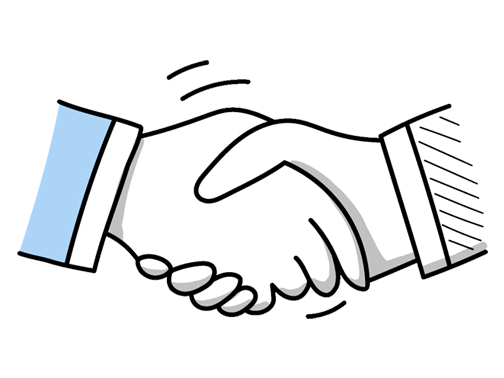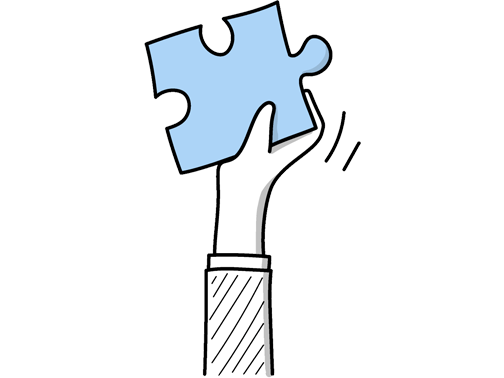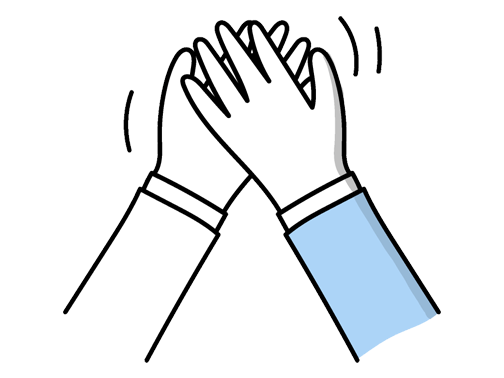Aircraft Structures Technician Interview Questions (2025 Guide)
Find out common Aircraft Structures Technician questions, how to answer, and tips for your next job interview
Practice Interviews Online - Identify your strengths and weakness in a realistic Aircraft Structures Technician mock interview, under 10 minutes
Practice Now »Aircraft Structures Technician Interview Questions
This interview question assesses your understanding of safety and quality assurance in aircraft maintenance. You need to explain that you first prepare and inspect the area, then choose and apply the appropriate NDT method, followed by analyzing results to identify defects without damaging the structure.
Example: When carrying out non-destructive testing on aircraft structures, I start by thoroughly preparing the surface to ensure accurate results. Next, I select the right method—like ultrasonic or dye penetrant—based on the material and type of inspection needed. Then, I carefully apply the technique, observing any indications closely. Throughout, I document findings clearly and report any issues promptly to keep the aircraft safe and compliant.
Questions like this assess your ability to recognize and respond to safety risks promptly, which is crucial in maintaining aircraft integrity and preventing accidents. In your answer, clearly describe the hazard you found, explain the steps you took to address it following safety protocols, and highlight your proactive communication to ensure the issue was resolved properly.
Example: During a routine inspection, I noticed a small crack in a critical wing support. I immediately reported it to the senior engineer and isolated the area to prevent any stress tests. Acting quickly ensured we avoided further damage and maintained safety standards. Keeping communication clear and following procedure helped resolve the issue without delay, reinforcing the importance of vigilance in aircraft maintenance.
What they want to know is that you prioritize safety by thoroughly inspecting and verifying your repairs to maintain the aircraft’s structural integrity. You need to explain that you carefully follow technical manuals, perform detailed visual and non-destructive inspections, and conduct necessary testing or stress analysis to confirm the repair is sound.
Example: After completing a repair, I carefully examine the affected area to confirm everything aligns with the specified standards. I rely closely on the technical manuals to guide each step and ensure compliance. Once the work is done, I perform the necessary tests, like non-destructive inspections, to verify the repair’s quality and safety. This approach helps maintain confidence in the aircraft’s overall structural soundness.
Employers ask this question to assess your leadership, communication, and problem-solving skills in a critical aircraft repair context. You need to describe how you took initiative to organize the repair plan, delegated tasks clearly, maintained effective communication among your team, and resolved any unexpected challenges during the project.
Example: Yes, I once took charge of a team repairing a damaged wing panel. I made sure everyone understood their tasks and kept communication clear throughout. When we encountered unexpected corrosion, I quickly coordinated a plan to reassess and source the right materials, which kept us on schedule. It was rewarding to see how practical problem-solving and teamwork helped us complete the repair safely and efficiently.
Questions like this assess your commitment to safety and your proactive approach to staying informed in a critical field. You need to say that you regularly review official aviation authority updates, apply new safety information in your daily inspections, and actively engage in ongoing training to ensure best practices are followed.
Example: I regularly follow updates from the Civil Aviation Authority and attend industry workshops to stay informed. When new safety guidelines come out, I review them carefully and adjust my work procedures accordingly. Keeping up-to-date isn’t just about rules—it’s part of maintaining a strong safety mindset, which I actively contribute to by sharing insights with my team and encouraging best practices every day.
This interview question helps the employer understand your hands-on experience and familiarity with different aircraft models, which indicates your adaptability and technical skills. You need to clearly state the types of aircraft you have worked on and briefly mention any specialized tasks or systems you handled.
Example: I’ve worked on a range of aircraft, from commercial jets like the Boeing 737 to smaller private planes. My experience includes inspecting and repairing both metal and composite structures, ensuring they meet safety standards. For example, I’ve been involved in routine maintenance on Airbus A320s, focusing on structural integrity and damage assessment, which gave me a solid understanding of various airframe materials and techniques.
This interview question is asked to assess your teamwork and communication skills in a technical setting. You need to describe how you communicated clearly with your team, collaborated by supporting others, and coordinated tasks to successfully complete the repair project.
Example: In a recent repair project, our team identified unexpected corrosion on a wing panel. I regularly updated everyone, shared progress, and listened to suggestions. By dividing tasks based on our strengths and checking each other’s work, we ensured quality and safety. Our combined effort not only met the deadline but also maintained the aircraft’s integrity, showing how teamwork can make a real difference on complex tasks.
Employers ask this question to see how you handle teamwork and communication under pressure. You need to describe a specific conflict, explain how you listened to everyone involved, and show how you helped find a practical solution that kept the team focused and effective.
Example: During a project, two colleagues disagreed over repair methods, which affected our progress. I invited both to share their views openly, helping us find common ground. By encouraging collaboration and focusing on the aircraft’s safety standards, we combined the best parts of each approach, resolving the issue smoothly and maintaining team harmony.
Hiring managers ask this question to assess your problem-solving skills and technical expertise in real-world situations. You need to clearly explain the issue, the diagnostic steps you took, and how you successfully resolved the problem.
Example: In my previous role, I noticed unusual wear on a wing joint during routine inspection. I carefully examined the area, identified a small crack developing beneath the surface, and consulted technical manuals to confirm the issue. After coordinating with the engineering team, I applied the appropriate repair technique, ensuring the structure met all safety standards before returning it to service. It was satisfying to catch that early and prevent a bigger problem.
Interviewers ask this to see if you prioritize safety and follow protocols, which is crucial in aircraft maintenance. You need to say that you always follow safety guidelines, regularly inspect tools and equipment, and report any hazards immediately.
Example: I keep safety front and centre by following all standard procedures and regularly checking my workspace for hazards. For example, I always use the correct protective gear and ensure tools are stored properly to prevent accidents. Staying up to date with regulations and communicating openly with the team helps maintain a safe, compliant environment where everyone feels responsible for safety.
What they want to know is if you understand the materials' properties and how to handle them safely and effectively. You need to mention common materials like aluminum alloys, composites, and titanium, and explain that you follow proper procedures for cutting, shaping, and joining while ensuring structural integrity and safety.
Example: In aircraft structures, materials like aluminium alloys, titanium, and composites such as carbon fibre are common. Working with them means understanding their properties—aluminium for its lightness and strength, titanium where heat resistance is needed, and composites for weight saving. Handling these materials involves precise measuring, cutting, and joining techniques, always following safety and quality standards to ensure the integrity and performance of the aircraft.
What they want to know is how you methodically find and fix problems without losing focus or ignoring safety. You need to explain that you assess all possible causes calmly, communicate clearly with your team, and apply approved repair methods to resolve the issue safely and effectively.
Example: When I run into an unexpected issue during a repair, I take a moment to assess the situation calmly and pinpoint what’s really causing the problem. I stay focused, thinking through practical fixes that won’t compromise safety or regulations. For example, once I found a hidden crack that wasn’t in the initial report, so I carefully inspected the surrounding area before deciding the best way to reinforce the structure without delay.
This interview question aims to assess your familiarity with the tools essential for ensuring aircraft parts meet strict safety and quality standards. You need to explain the types of precision measuring tools you have used and how you applied them accurately during maintenance tasks.
Example: In my previous roles, I regularly used tools like micrometers and calipers to check components with tight tolerances. For example, measuring wing spars to ensure structural integrity before assembly was routine. I’m comfortable interpreting technical drawings and ensuring measurements meet strict specifications, which is crucial for safety and performance in aircraft maintenance. This experience has taught me the importance of precision and attention to detail in every task.
Hiring managers ask this to see if you prioritize safety and compliance in your work. You need to explain how you follow manuals, double-check work, and use proper tools to meet all regulations and ensure aircraft safety.
Example: To ensure repairs meet all standards, I start by thoroughly reviewing the relevant regulations and maintenance manuals. I follow approved procedures closely and use calibrated tools to maintain precision. Throughout the process, I document each step carefully to provide a clear record. For example, when repairing a wing panel, I double-check torque settings and inspection points to guarantee both safety and compliance.
This question checks if you prioritize safety and understand industry standards. You need to say you always follow regulatory guidelines, use proper personal protective equipment, and ensure all tools and materials meet safety requirements.
Example: When working on aircraft structures, I always start by reviewing the relevant safety manuals and wearing proper protective gear like gloves and safety glasses. I ensure the workspace is clean and tools are in good condition to prevent accidents. For example, when inspecting composite panels, I handle materials carefully to avoid contamination and follow lockout procedures to secure electrical systems before starting any work.
Employers ask this question to assess your problem-solving skills and ability to maintain safety under pressure. You need to clearly describe a specific repair challenge, explain your approach to resolving it, and emphasize how you ensured the repair met all quality and safety standards.
Example: During a repair on a wing panel with unexpected corrosion, I carefully assessed the damage to determine the best approach. Using precise material removal and approved bonding techniques, I ensured the structure was restored without compromising integrity. Throughout, I followed all safety protocols and quality checks, resulting in a reliable fix that met maintenance standards and extended the component’s service life.
Employers ask this question to assess your technical knowledge and attention to detail in ensuring aircraft safety. You need to explain the steps of inspection, identifying damage, assessing severity, and following repair procedures while adhering to safety standards and documentation.
Example: Certainly. Inspecting aircraft structures starts with a thorough visual check, looking for cracks, corrosion, or damage. If issues are found, I assess their severity using tools like ultrasonic testers. Repairs might involve replacing panels, riveting, or applying patch repairs, ensuring everything meets safety standards. For example, when fixing a wing panel dent, careful surface prep and precise fitting are key to restoring strength and maintaining aircraft integrity.
This question helps interviewers assess your formal qualifications and practical skills in aircraft structures. You need to clearly state your relevant certifications, like Part-66 or EASA licenses, and briefly explain how you've used them in real maintenance tasks such as inspections or repairs.
Example: I hold a Level 3 NVQ in Aircraft Structures and have completed specific training on composite repairs and metal fatigue. In my previous role, I regularly applied these skills inspecting and maintaining airframe components. I’m keen to keep improving through ongoing courses and staying updated with the latest industry standards, ensuring my knowledge remains practical and relevant to day-to-day aircraft maintenance.
Employers ask this to see how you manage time and ensure safety under pressure. You need to say that you assess the severity and impact of each issue, then address the most critical problems first while communicating clearly with your team.
Example: When facing several structural issues, I first assess which ones impact safety and aircraft integrity the most. For example, critical damage near load-bearing areas takes priority. I also consider the urgency of scheduled flights and maintenance windows, balancing efficiency without compromising quality. Clear communication with the team helps ensure everyone’s aligned and tasks are managed smoothly. This way, I keep operations safe and on track.
This question assesses your ability to accept and use constructive criticism to improve your skills and work quality. You need to say that you listen carefully, stay open-minded, and make adjustments based on the feedback to ensure safety and accuracy in your tasks.
Example: I welcome feedback as a vital part of improving my work. When a supervisor once pointed out a mistake in my assembly, I listened carefully, asked questions to understand better, and applied the correction immediately. It helped me avoid future errors and strengthened the trust within the team. I see feedback as an opportunity to learn and grow, always aiming to maintain high standards and contribute positively.
Employers ask this to see if you can make complex technical details accessible and ensure effective teamwork. You should say you simplify concepts using clear language or analogies, check understanding by inviting questions, and tailor your communication style with tools like visuals to match your audience’s knowledge.
Example: When sharing technical details with team members less familiar with the subject, I focus on breaking down the information into straightforward terms and relate it to everyday examples. I pay close attention to their reactions and invite questions to make sure everything is clear. It’s important to tailor how I explain things based on who I’m talking to, so the message is accessible and easily understood by everyone involved.
This interview question assesses your awareness of safety protocols and your responsibility in preventing injury during repairs. You need to say that you use appropriate PPE such as safety glasses, gloves, hearing protection, and sometimes respirators to protect yourself from hazards like sharp edges, noise, and harmful substances.
Example: When working on structural repairs, I always wear safety glasses to protect my eyes from debris, gloves to guard against sharp edges, and hearing protection when using power tools. Depending on the task, a dust mask is important to avoid inhaling particles. It’s about staying mindful of the risks and using the right gear to keep safe without slowing down the work.
What they want to know is how you maintain clear and accurate information flow to avoid errors and ensure safety. You need to say you use thorough documentation and regular check-ins with your team to confirm understanding and track progress.
Example: During a repair project, I focus on clear, straightforward communication with the team. I make sure everyone understands their tasks and encourage questions to avoid confusion. For example, I keep daily briefings brief but thorough and use visuals like diagrams when discussing complex structures. Staying approachable helps teammates share updates or concerns early, which keeps the project running smoothly and safely.
Questions like this help the interviewer understand your practical expertise and how well you follow safety and quality standards. You need to clearly mention the specific technical skills you've used, your commitment to aviation regulations, and how you effectively work with others in a team.
Example: In my previous role, I regularly worked on repairing and inspecting aircraft components, ensuring all tasks met stringent safety and quality standards. I’m comfortable using various hand tools and composite materials, and I always double-check my work for any defects. Collaborating with engineers and fellow technicians was key, keeping communication clear to solve issues efficiently, especially during tight maintenance schedules or unexpected repairs.
Interviewers ask this question to assess your problem-solving skills and ability to think innovatively under pressure. In your answer, clearly describe the structural issue you faced, explain the creative method or material you used to fix it, and highlight the successful outcome for the aircraft's safety and performance.
Example: In a previous role, we faced a persistent crack in a composite panel that standard repairs wouldn’t hold. I suggested using a locally tailored patch design with stepped doublers instead of a single large repair to better distribute stress. This approach extended the panel’s life significantly and passed all inspections, saving time and reducing material costs. It was a practical tweak that made a big difference.
Ace your next Aircraft Structures Technician interview with even more questions and answers
Common Interview Questions To Expect
The interviewer is looking for your career goals, ambition, and commitment to the industry. Answers should demonstrate a desire for growth and development within the company.
Example: In five years, I see myself continuing to grow and develop as an Aircraft Structures Technician within this company. I am committed to advancing my skills and knowledge in the industry, and I hope to take on more challenging projects and responsibilities. Ultimately, my goal is to become a valuable asset to the team and contribute to the success of the company.
The interviewer is looking for insight into your long-term aspirations and how they align with the company's goals. Be honest, specific, and show ambition.
Example: My career goal is to become a lead Aircraft Structures Technician, where I can take on more responsibility and mentor junior technicians. I also aim to continue my education and obtain certifications in advanced aircraft maintenance techniques. Ultimately, I want to contribute to the growth and success of the company by ensuring the safety and efficiency of our aircraft fleet.
The interviewer is looking for evidence that you have done your research on the company, understand their industry, values, and goals. You can answer by discussing their history, products/services, recent news, or company culture.
Example: I know that your company is a leading aircraft maintenance provider in the UK, with a strong reputation for quality and safety. I also read about your recent expansion into new markets, which shows your commitment to growth and innovation. Overall, I'm impressed by your company's dedication to excellence in the aviation industry.
Interviewees can answer by discussing a specific mistake, acknowledging responsibility, explaining how they rectified the situation, and highlighting lessons learned. Interviewers are looking for honesty, accountability, problem-solving skills, and the ability to learn from mistakes.
Example: Yes, I once made a mistake during a structural repair on an aircraft where I misinterpreted a technical drawing. I immediately informed my supervisor, took responsibility for the error, and worked with the team to correct the mistake. I learned the importance of double-checking technical specifications and have since implemented a more thorough review process to prevent similar errors in the future.
The interviewer is looking for your level of interest in the company and the role, as well as your curiosity and preparedness. You can ask about company culture, team dynamics, growth opportunities, or any other relevant topic.
Example: Yes, I was wondering about the training and development opportunities available for Aircraft Structures Technicians at your company. Can you tell me more about the team I would be working with and how they collaborate on projects? Also, I'm curious about the company's long-term goals and how this role fits into that vision.
Company Research Tips
The company's official website is a goldmine of information. Look for details about the company's history, mission, vision, and values. Pay special attention to any information related to the aviation industry and the role of an Aircraft Structures Technician. This will give you a good understanding of the company's operations and culture, and how your role fits into the bigger picture.
Tip: Don't just stick to the 'About Us' page. Explore the 'News' or 'Blog' sections to get the latest updates and developments about the company.
Social media platforms like LinkedIn, Twitter, and Facebook can provide valuable insights into the company's culture and values. You can also find information about recent projects, partnerships, and industry trends. LinkedIn can be particularly useful to understand the company's structure, key employees, and to get a sense of the skills and experience the company values.
Tip: Follow the company's social media pages to get regular updates. Look at the comments and reviews to understand the public perception of the company.
Industry reports and news articles can provide a broader context of the company's position in the aviation industry. Look for information about market trends, competitors, and challenges in the industry. This will help you understand the external factors that impact the company and how it is responding to them.
Tip: Use reliable sources for your research. Websites like BBC News, The Guardian, and industry-specific publications can provide accurate and up-to-date information.
Analyzing the job description can give you specific insights about what the company is looking for in an Aircraft Structures Technician. Look for details about the skills, qualifications, and experience required for the role. This will help you tailor your responses during the interview to highlight how you meet these requirements.
Tip: Use the job description as a guide to prepare for potential interview questions. For example, if the job description mentions 'attention to detail', be prepared to give examples of how you have demonstrated this skill in the past.
What to wear to an Aircraft Structures Technician interview
- Clean, well-fitted jeans or trousers
- Smart casual shirt or polo
- Comfortable, clean shoes
- Avoid flashy accessories
- Neat and tidy hairstyle
- Minimal cologne or perfume
- Light makeup for women
- Clean, trimmed nails
- Avoid wearing too much jewellery
- Carry a professional bag or briefcase





